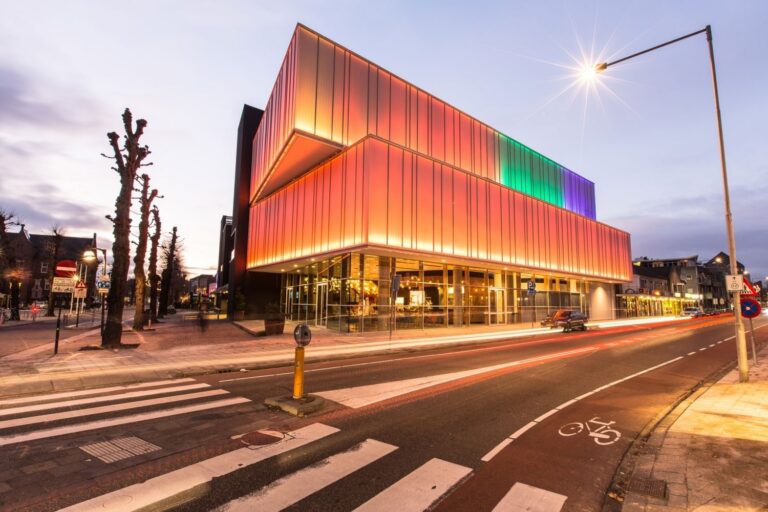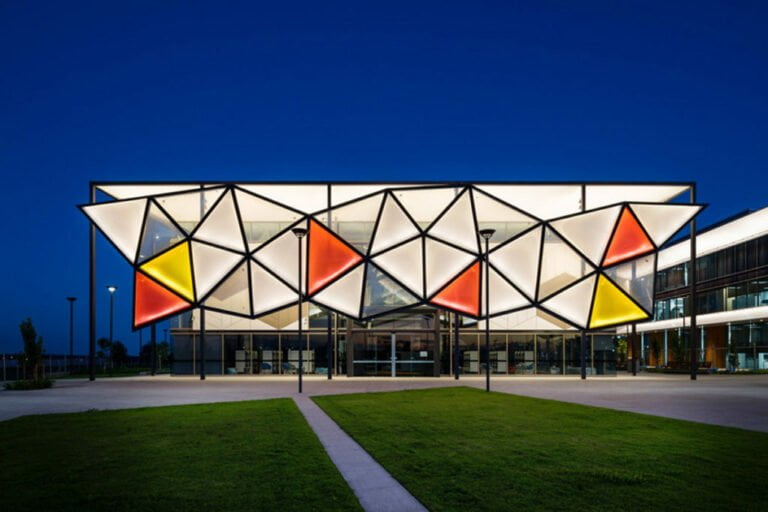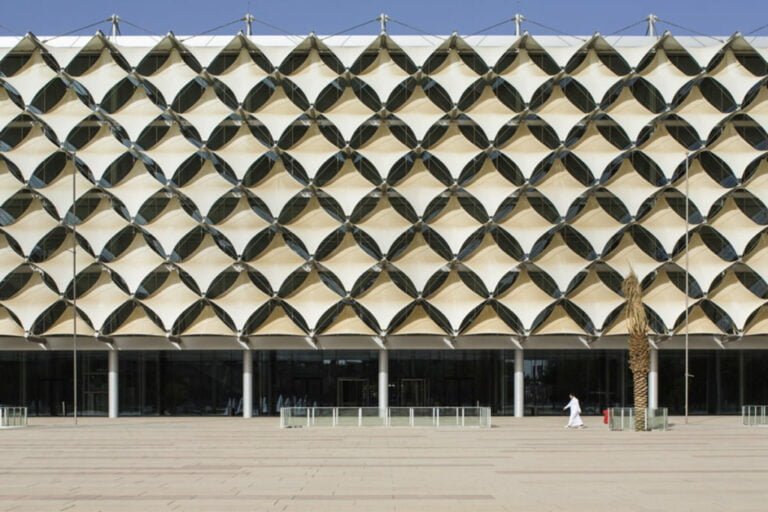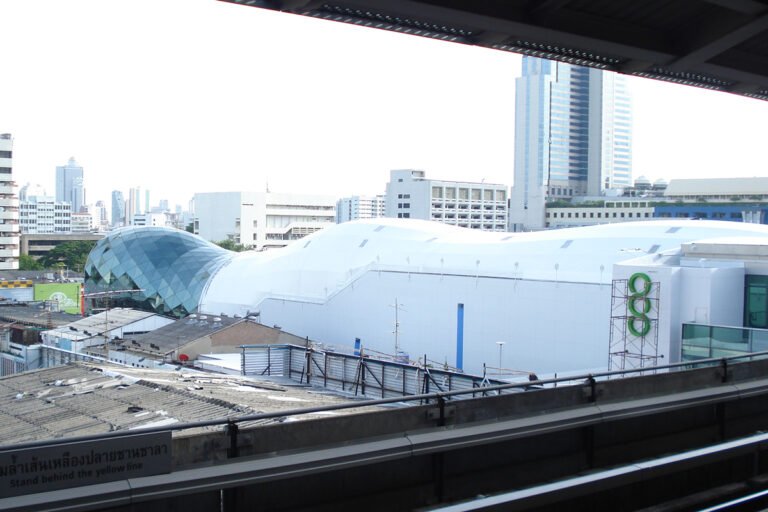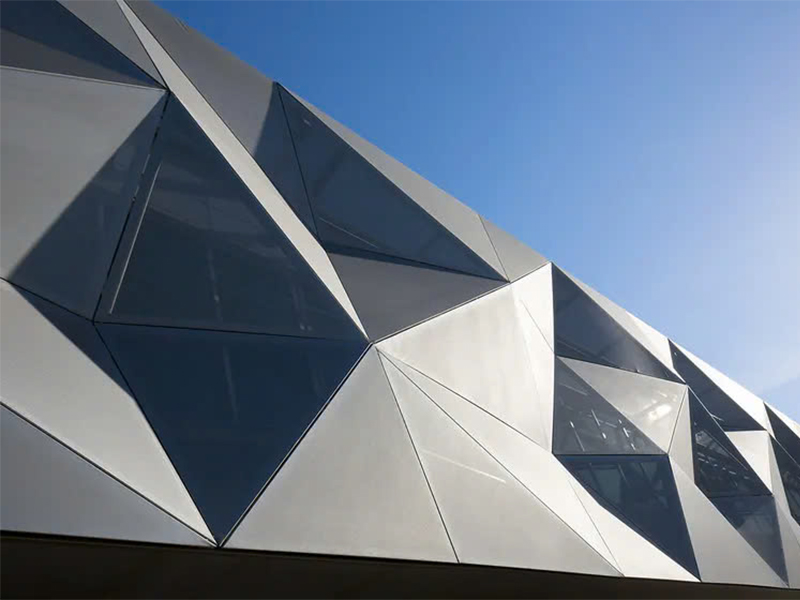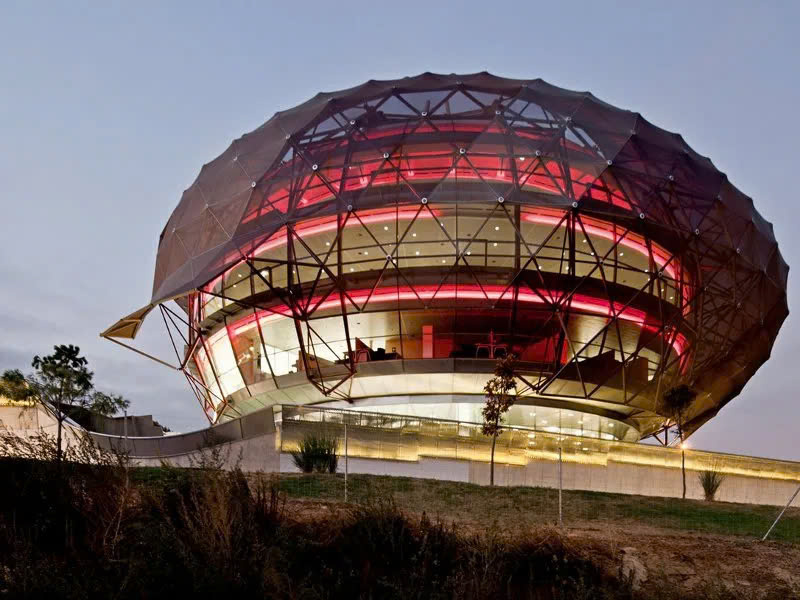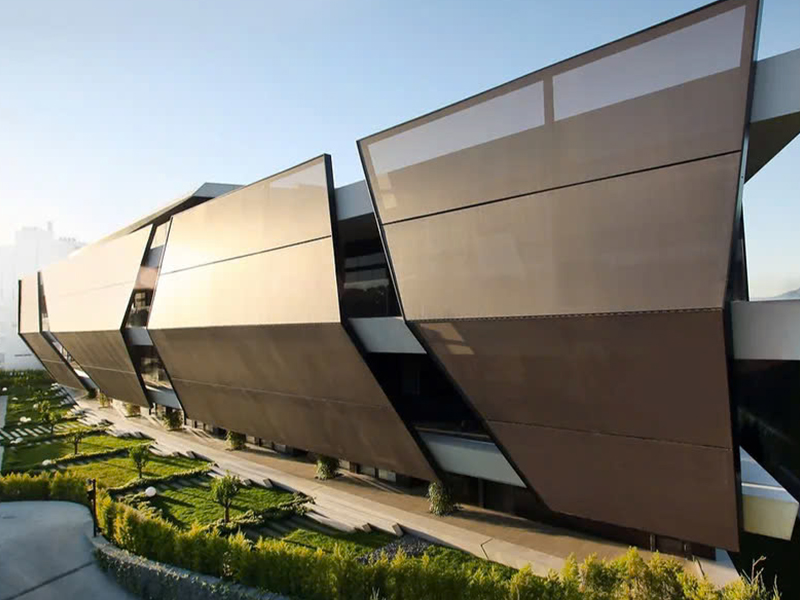Current situation and solution: What is Facade? Application of tensile fabric structure in modern architecture by Flexiiform
Facade, also known as the facade, is the exterior part of the building, responsible for creating the first impression of the building. Not only having aesthetic significance, the facade structure also plays an important role in optimizing the ability to insulate, ventilate and protect the interior of the building from harsh weather factors. Currently, with the strong development of sustainable architecture and material technology, many architects and investors are switching to using new materials such as tensile membrane structures for facades instead of traditional materials such as glass or concrete.
Technical Requirements & Context Analysis
In the context of modern architecture, buildings are increasingly faced with high demands for energy efficiency, reduced structural loads, and unique formability. Traditional facade materials such as glass or concrete are often heavy, cause high heat absorption (greenhouse effect), and have design limitations. This poses a technical challenge to find a lightweight, sustainable facade solution that can control temperature and natural light, while providing maximum design flexibility. This need reframes the question of what a Facade is in the context of new material technology.
Technical Solutions and Implementation Process
To solve the above challenges, the solution of using tensile fabric structure for facade has been developed with outstanding technical advantages and professional implementation process.
Technical Benefits of Using Tension Fabric Structures for Facades
When it comes to what is facade, today, tensioned fabric structure emerges as an effective alternative with many technical advantages:
- Creative and flexible design: With tensioned canvas, architects can easily create curved, unconventional facades or complex 3D surfaces, making the building stand out and different from traditional architecture.
- Lightweight and durable materials: Compared to glass or metal, tensile fabric is much lighter (only a few kg/m²), which helps to significantly reduce the load on the entire building structure, optimizing the cost of foundations and frames. At the same time, this material ensures high durability under the impact of tensile force and the environment.
- Good resistance to harsh weather conditions: Materials such as PVDF (Polyvinylidene Fluoride), ETFE (Ethylene Tetrafluoroethylene), and Mesh (fiber mesh) have good resistance to UV radiation, are waterproof, and can withstand high wind loads, helping the project to stay beautiful over time.
- Environmentally friendly and energy saving: Using stretch fabric helps to reduce the amount of construction waste during construction and can be recycled after use. In particular, the material's ability to control temperature and natural light significantly reduces energy consumption for air conditioning and lighting systems, a great advantage for sustainable projects.
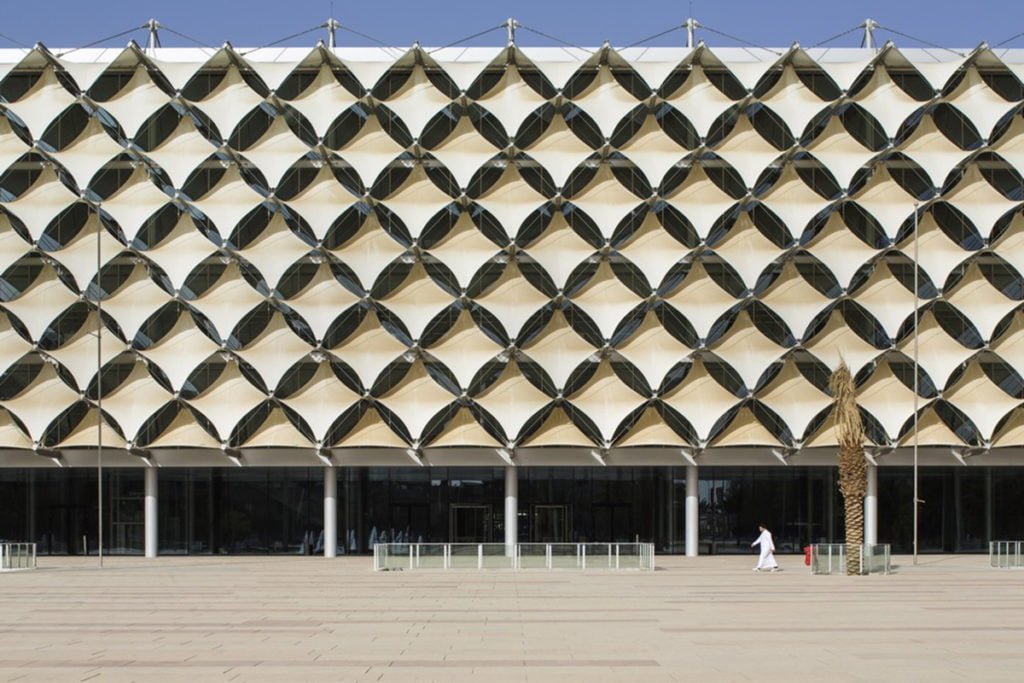
Popular Types of Tensioned Fabric Materials for Facades
To better understand what a tensile fabric structure for a facade is, investors and architects should know about three main types of materials:
- PVDF (Polyvinylidene Fluoride): This is a popular material for stretch tarpaulins with a surface coating that is dustproof, waterproof and self-cleaning. It has high durability and good chemical resistance.
- ETFE (Ethylene Tetrafluoroethylene): An advanced material, with high tensile strength and transparency (good light transmission), which optimizes natural light and insulation for buildings, contributing to energy savings.
- Mesh: Woven mesh material made from PVC-coated polyester or PTFE-coated fiberglass helps create natural ventilation for the building, while protecting against UV rays and reducing the temperature inside the building while still ensuring visibility.
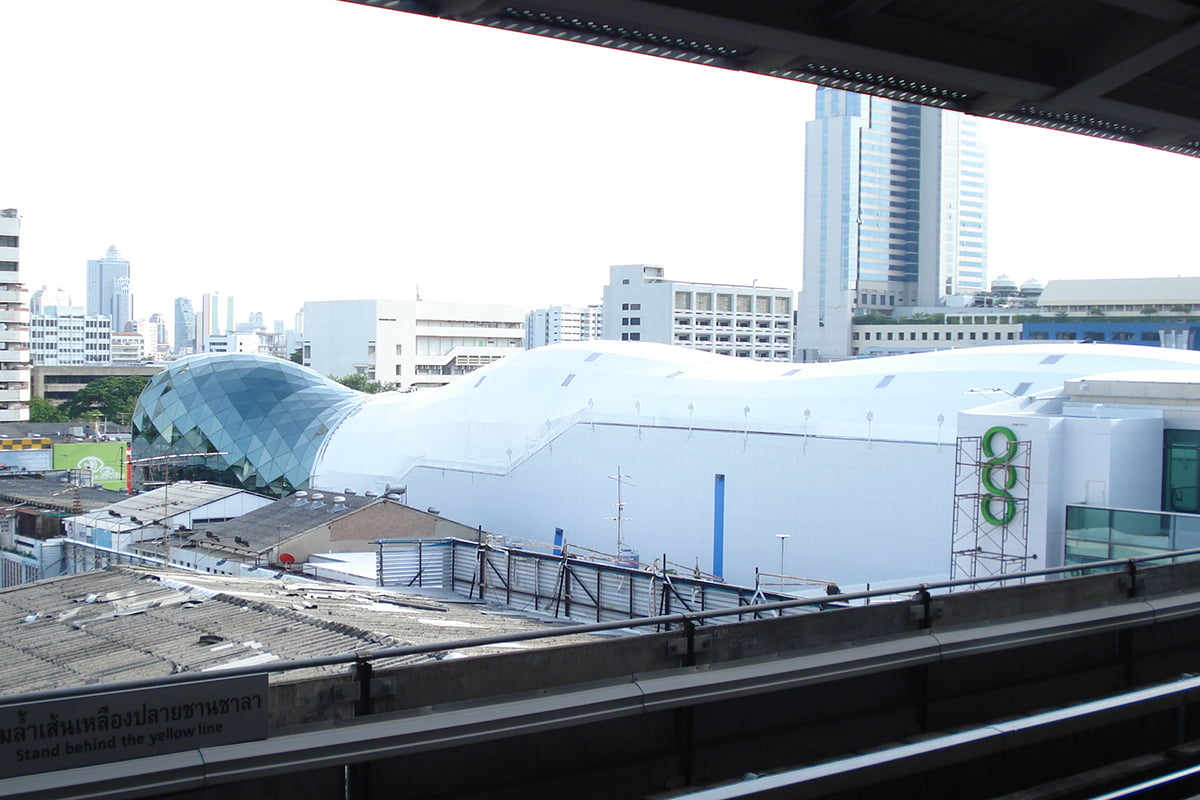
Construction Process of Applying Tensioned Canvas in Facade Design
The process of constructing facades using stretched canvas is carried out in professional steps:
- Survey and Analysis: Evaluate environmental conditions, loads (wind, snow), and specific architectural requirements of the project.
- Engineering Design and Simulation: Use specialized software to design 3D shapes, calculate structures (stainless steel or aluminum support frames), and simulate aerodynamic and thermal performance to optimize the design.
- Material Processing: Stretched canvas panels are cut, welded and finished in the factory with high precision.
- Installation and Alignment: The frame system is installed on site. The fabric panels are stretched and fixed to the frame with specialized anchoring mechanisms, ensuring flat and stable tension.
- Inspection and Delivery: Conduct overall quality checks to ensure construction meets technical and safety standards.
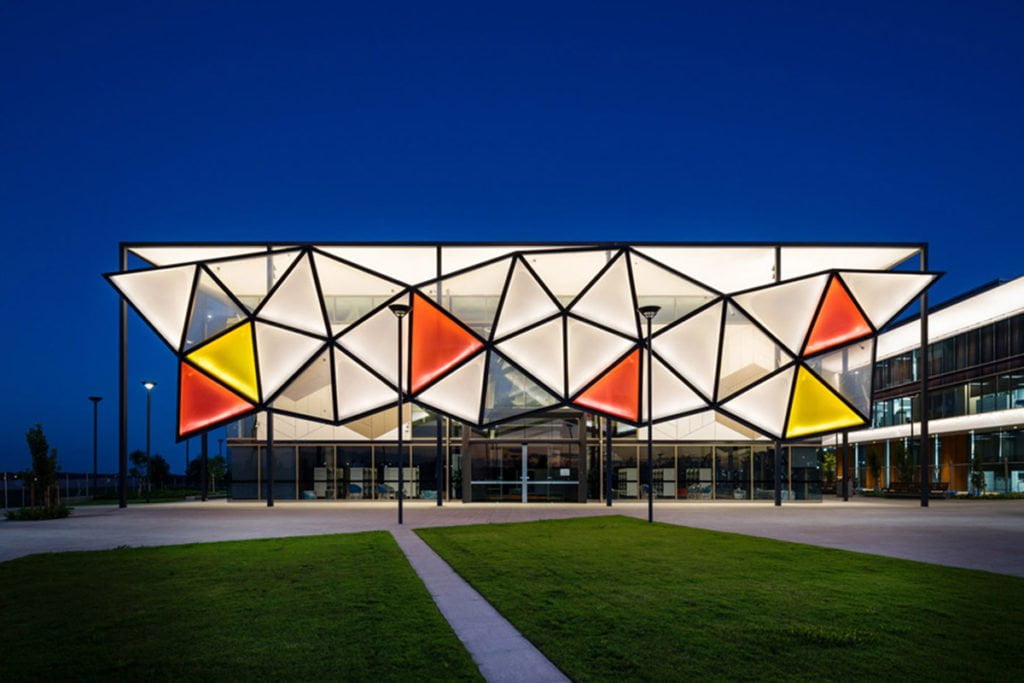
Results and Performance Evaluation
With the rapid development of modern architecture, the question “What is a Facade?” is gradually being answered more clearly through tensioned canvas solutions. Using tensioned canvas helps architects expand their creativity, while bringing practical values to investors:
- Reduce maintenance costs: The surface of the stretched canvas is less dusty and easy to clean, significantly reducing periodic maintenance costs.
- Long life: High quality stretch fabric materials have a lifespan of up to 20-30 years, ensuring long-term investment efficiency.
- Construction protection: Weather resistance helps protect the building's structure and interior from environmental factors.
- Energy optimization: The ability to regulate heat and natural light contributes to reducing the building's energy consumption.
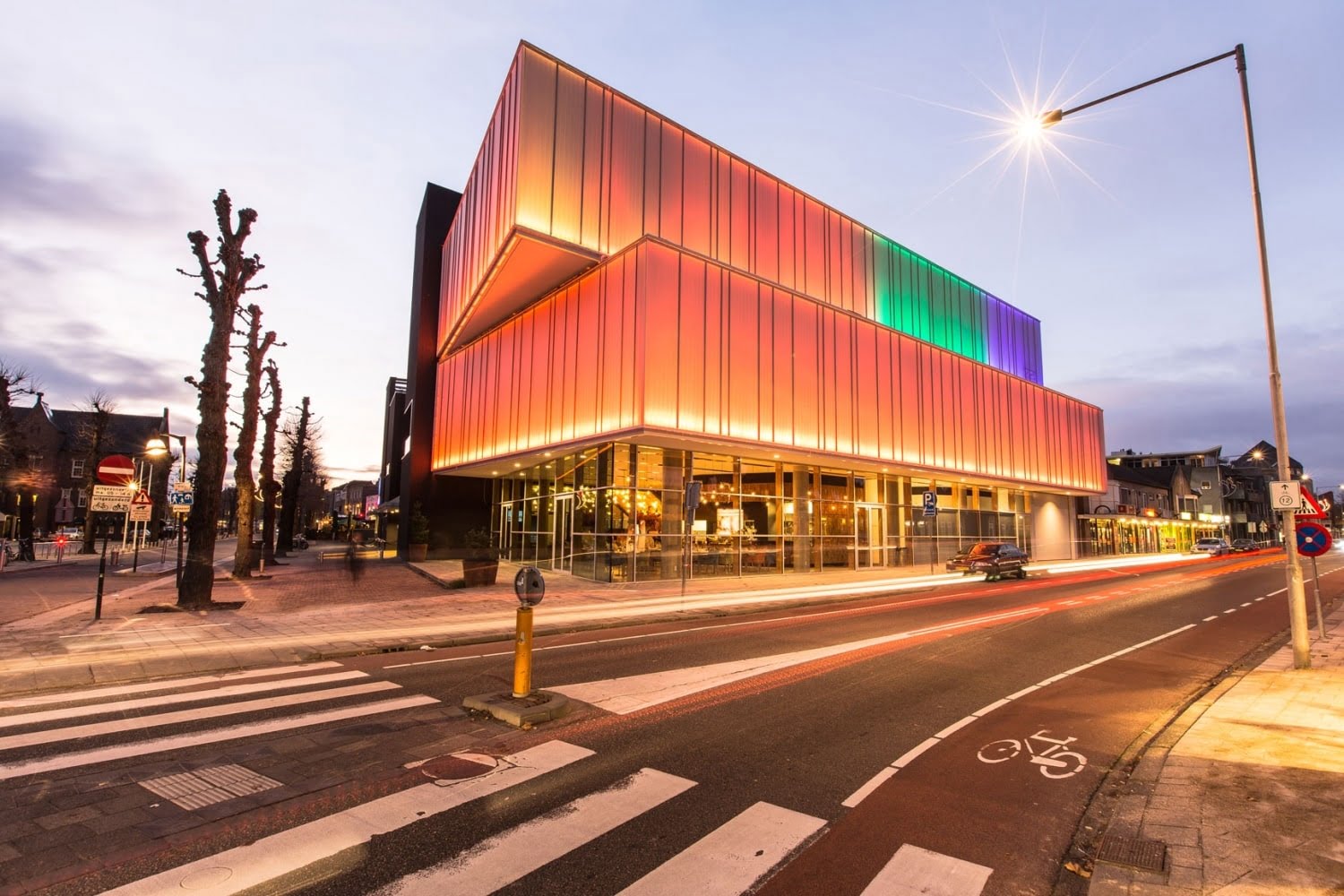
Contact Technical Consulting
Flexiiform is a professional Tensile Fabric design and construction company in Vietnam. With a team of well-trained and skilled Architects and Engineers, we are proud to be the only unit in Vietnam to receive professional advice from Fastech Company – The leading company in designing and constructing tensioned canvas structures in Thailand, with nearly 30 years of prestige and experience in the industry and successfully implementing more than 1,000 tensioned canvas projects in Thailand and Southeast Asia.
With the strength of creative ideas in tensile fabric architectural design, along with practical construction methods, Flexiiform is confident to bring the most optimal solutions for each specific project. If you are looking for a reputable supplier tarpaulin service To carry out high quality facade projects in Vietnam, please contact:
Flexiiform Company Limited
Website: https://flexiiform.vn/
Phone: +84 867 868 830
Fanpage: FlexiiForm Fanpage
Email: [email protected]


